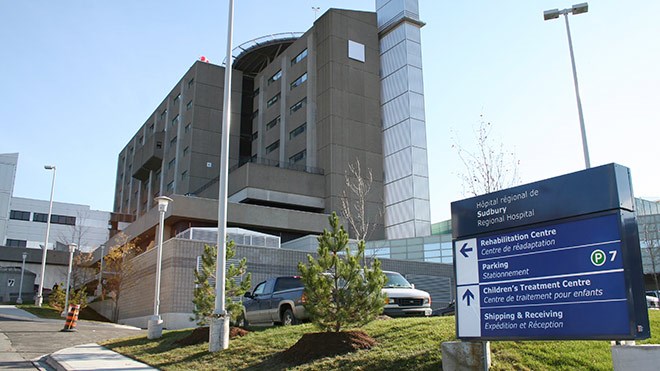The number of cancer cases in Canada is expected to increase 40 per cent by 2030.
And while that's big number, the projected increase — which comes from the Canadian Cancer Society's latest yearly report on the disease — doesn't surprise the vice-president of cancer and clinical support at Health Sciences North.
“It's very consistent with what Cancer Care Ontario and the Cancer Quality Council of Ontario has been saying and predicting for some time,” said Mark Hartman.
There are two main factors that will contribute to the increase in cancer cases over the next 15 years, says the society in the report, "Canadian Cancer Statistics 2015": population growth and an aging population.
In just over two decades, between 2005 and 2030 prostate cancer cases will increase by 97 per cent, and colorectal cancers will increase by 79 per cent, says the Canadian Cancer Society.
The leading factor that contributes to both cancers is advanced age.
And Northern Ontario's population skews slightly older than the national average, but population growth in the North is lower than in southern Ontario.
“Overall Northern Ontario is probably somewhere in the middle in terms of that growth in demand (for cancer treatment),” Hartman said.
Lung cancer cases are expected to increase 46 per cent over the same period, and could affect a greater proportion of people in the North, where smoking is still more common than in southern Ontario.
While smoking rates in Sudbury have fallen significantly over the last 10 years, 18 per cent of adults still smoke, significantly higher than Ontario's overall rate of 12 per cent.
Hartman said the hospital typically looks ahead to the next five years for cancer treatments, and 10 years for big capital investments.
“We're relatively well placed right now in terms of some of the big capital demands for the North,” he said.
Sudbury is well placed to meet growing demand for radiation treatment, and the hospital is well staffed with oncologists and surgeons involved in cancer care, Hartman said.
But one area that needs work is increasing access to primary care physicians, who play an important role in cancer prevention, screenings and follow-ups after treatment.
Early screenings, said Hartman, are the most effective way to improve health outcomes for cancer patients.
Colorectal cancer, for instance, is easily curable if it is detected early, but the chances of survival decrease dramatically if it is discovered too late.
While Northern Ontario is on par with the rest of the province for colorectal screenings, only 50 per cent of the eligible population is getting screened, Hartman said.
Even though a much larger number of people will be diagnosed with cancers over the next 15 years, the outcomes for cancer patients have never been better.
The five-year relative survival rate for prostate cancer is 96 per cent, for instance, and the five-year survival rate for breast cancer is 88 per cent.
“We've seen some really significant improvements in terms of the treatments that are available and the survival rates for many of the common cancers in particular,” Hartman said.
But prevention – not smoking, maintaining a healthy weight, exercising and eating a healthy diet – can go a long way to improving those health outcomes.
“As they say, an ounce of prevention is worth a pound of cure,” Hartman said.
All incidence and death rates are age-adjusted. For more information about Canadian Cancer Statistics 2015, visit cancer.ca/statistics.
Join Sudbury.com+
- Messages
- Post a Listing
- Your Listings
- Your Profile
- Your Subscriptions
- Your Likes
- Your Business
- Support Local News
- Payment History
Sudbury.com+ members
Already a +member?
Not a +member?
Sign up for a Sudbury.com+ account for instant access to upcoming contests, local offers, auctions and so much more.
